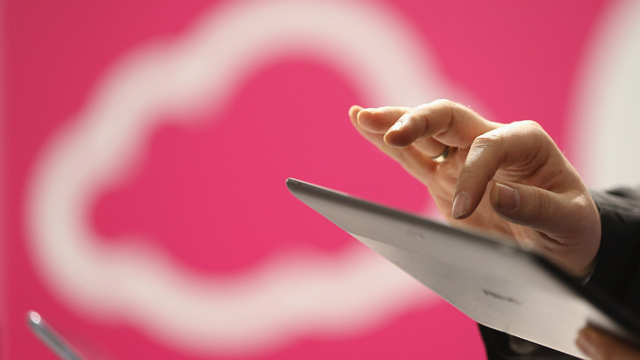
(Getty)
When people talk about The Internet of Things, what exactly do they mean? Allow us to explain…
1. The Definition of The Internet of Things
IBM’s video above can help to clarify this term.
If you look up the definition of The Internet of Things, you’re likely to be frustrated by the wordy, complex descriptions you encounter. Here’s how Wikipedia defines it:
“The Internet of Things (or IoT for short) refers to uniquely identifiable objects and their virtual representations in an Internet-like structure.”
Cisco Systems has a similar definition:
“The Internet of Things (IoT) is the network of physical objects accessed through the Internet, as defined by technology analysts and visionaries. These objects contain embedded technology to interact with internal states or the external environment. In other words, when objects can sense and communicate, it changes how and where decisions are made, and who makes them.”
And Techopedia has its own definition:
“The Internet of Things (IoT) is a computing concept that describes a future where everyday physical objects will be connected to the Internet and be able to identify themselves to other devices. The term is closely identified with RFID as the method of communication, although it also may include other sensor technologies, wireless technologies or QR codes.
The IoT is significant because an object that can represent itself digitally becomes something greater than the object by itself. No longer does the object relate just to you, but is now connected to surrounding objects and database data. When many objects act in unison, they are known as having ‘ambient intelligence.'”
So, in summation, when people are talking about The Internet of Things, what they are generally talking about is the next step in our digital lives. The Internet is no longer a place we visit on our computers, but a means of connecting the various aspects of our daily lives to one another.
Items that are connected to the Internet of Things in your own life might be your intelligent Nest thermostat, a “smart fridge” that tells you when you need to add an item to your grocery list, or the upcoming Google Now smartwatch that could potentially share delays in your commute with your loved ones waiting at home.
2. What Makes an Item Part of The Internet of Things
Business Insider had a great piece about the commonalities between all items that are part of “The Internet of Things.” BI argued that an item needed to have 7 key features, as follows:
1. Sensors
2. Internet Connectivity
3. Processors
4. Energy-efficiency
5. Cost-effectiveness
6. Quality and reliability
7. Security
3. ‘Internet of Things’ Is Attributed to Kevin Ashton
The #1 most innovative company in the Internet of Things? @Nest: http://t.co/njwU9JQo6E #FCMostInnovative
— Fast Company (@FastCompany) February 21, 2014
//platform.twitter.com/widgets.js
Kevin Ashton is generally considered to be the man responsible for creating and popularizing this tech term. Ashton is a tech pioneer, most notable for his confounding of the Auto-ID Center at the Massachusetts Institute of Technology. In a 2009 article from RFID Journal, Ashton talked at length about the term he coined. He wrote:
“The fact that I was probably the first person to say ‘Internet of Things’ doesn’t give me any right to control how others use the phrase. But what I meant, and still mean, is this: Today computers—and, therefore, the Internet—are almost wholly dependent on human beings for information…
The problem is, people have limited time, attention and accuracy—all of which means they are not very good at capturing data about things in the real world.
And that’s a big deal. We’re physical, and so is our environment. Our economy, society and survival aren’t based on ideas or information—they’re based on things…Yet today’s information technology is so dependent on data originated by people that our computers know more about ideas than things.
If we had computers that knew everything there was to know about things—using data they gathered without any help from us—we would be able to track and count everything, and greatly reduce waste, loss and cost. We would know when things needed replacing, repairing or recalling, and whether they were fresh or past their best.
We need to empower computers with their own means of gathering information, so they can see, hear and smell the world for themselves, in all its random glory.”
4. There Is an Internet of Things Consortium
The Internet of Things Consortium includes companies like Logitech, Basis, Ouya, Mojio, and Planet Labs. The goal of the consortium is outlined on their website: “IoTC drives adoption of IoT products through market development and consumer awareness for our members.”
The consortium aims to promote Internet of Things products that have great value, data, design, and security.
5. The Internet of Things Could Pose Security or Privacy Risks
Many people are concerned that giving household appliances and gadgets access to our personal information could pose serious privacy or security risks.
Earlier this year, NPR ran a story about the dangers of household appliances being hacked. “Smart TVs, wireless speakers and at least one refrigerator” have been hacked, but more devices could be just as vulnerable. Keeping these connected devices secure could prove difficult.
Privacy is also a concern. The Huffington Post recently ran an article about household items that could be “spying” on you, including TVs, dishwashers, and even pacemakers. As the Internet of Things continues to grow, so will concerns about safety and privacy.
Considering getting someone an electronics gift this holiday season? Check out our Gifts section for tons of great gift recommendations, or visit our ultimate guides to the best gifts for women and best gifts for men.

Comments
What Is The Internet of Things? 5 Fast Facts You Need to Know